By Leon Pantenburg
I bought this knife to review, and this post is strictly my opinion. Nobody had input in it. At the time of publication, there was no advertising relationship between L.T. Wright Custom Knives and Survival Common Sense.
The L.T. Wright Large Pouter arrived too late for me to use during deer season. That’s too bad, because it certainly would have ended up in my fanny pack during a late season hunt. I want a chance to blood it. But if I draw tags for a Mississippi alligator hunt this summer, the knife will be tested again on some of the toughest hide in the USA. And who knows? A hog hunt may come up.
Regardless, the Pouter got put to use. As is my wont, it rode on my hip and was used for whatever came up. Spring yard work is particularly challenging for review knives. The Pouter was used to slice open bags of gravel and dirt, for cutting plastic irrigation tubing and cutting sod. It cut up 100 feet of cotton rope into five-foot pieces for a survival class. The Pouter was used to cut up several thick cardboard furniture boxes into garbage bag sizes.
The knife was used hard for tasks it was designed for, but never abused – the blade wasn’t used to open a paint can or cut wire or pry open wooden crates. The Pouter performed as expected.
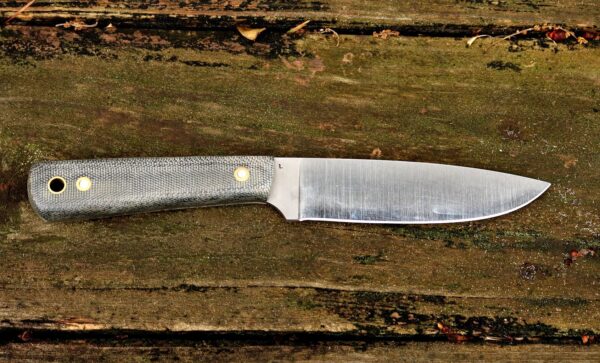
The L.T. Wright Large Pouter is a good-looking, hard-user knife.
Here are the Large Pouter specs (courtesy of DLT Trading):
- Overall Length: 9.1″
- Blade Length: 4.81″
- Cutting Edge Length: 4.69″
- Blade Thickness: 0.091″
- Blade Steel: AEB-L
- Blade Style: Drop Point
- Edge Style: Plain
- Handle Material: Black Micarta (other handle options are also available).
- Handle Thickness: 0.6″
- Weight: 4.4oz
The good stuff:
Blade thickness: Thank you L.T. Wright, for making a user knife with a practical blade thickness! Thankfully, users are getting away from the idea that a survival knife needs a thick knife blade. Knife makers will continue to make thick blades, because of Youtube knife reviewers who insist on batonning firewood. I guess they need to take up space – batonning wood is NOT a valid test of a blade. (Here is how to baton wood with a butter knife.)
At .09 inch thick, the blade worked just fine for all the slicing work in the kitchen. The blade went through the plastic gravel and compost bags like a laser. It had not trouble at all with the rope and cardboard.
Handle thickness: At .6 inches, the handle will be perfect for most users. I would prefer it to be thicker, but it’s understood that tool makers must cater to the largest audience. If you have average-to-large-sized hands, the handle is going to be very comfortable. For my large hands, the handle would have to be at least .85 inch to be perfect.
Point: A drop point is an excellent choice for a hunting/survival/bushcraft knife. A drop point is one of my favorites, and the point is centered in the blade. This makes it perfect for drilling in wood. (Think firebow.)
Blade length: A four-to-five-inch blade is about perfect for a hunting/survival knife IMHO. That length hits the sweet spot for me in a hunting and/or survival knife.
Steel: I have not used AEB-L steel before. AEB-L is a very common steel from Europe. It was originally developed by Bohler-Uddeholm as a razor blade steel and it takes a very keen edge. The steel is chemically similar to the Sandvik series of steels—12C27 and 14C28N. It is almost identical to Sandvik’s 13C27 with only minor differences in chemical composition.
Price: the Large Pouter starts at $179.00, which is a very reasonable cost for a knife of this quality. It is one that can be used hard and passed on to a grandchild.
Made in the USA: All L.T. Wright knives are made in Wintersville, Ohio by American craftspeople. Think about this: A Made in the USA product means it was built by Americans who make a living wage. These folks and the companies they work for pay local, state and federal taxes. The workers don’t toil in sweat shops, and they contribute to their communities. Buy American!
Then there’s this:
You didn’t read this far because this is good advertising copy.
Other than my constant nit-picking, complaining and whining about knife handle diameters, which has come to be expected, there is nothing I don’t like about this knife.
I’ve been using L.T. Wright Knives for years, and I’ve never gotten one that didn’t perform as expected. IMO the Genesis is one of the best bushcraft knives ever made. And the Improved Rogue River can handle all your hunting needs. You can’t go wrong with a L.T. Wright knife.
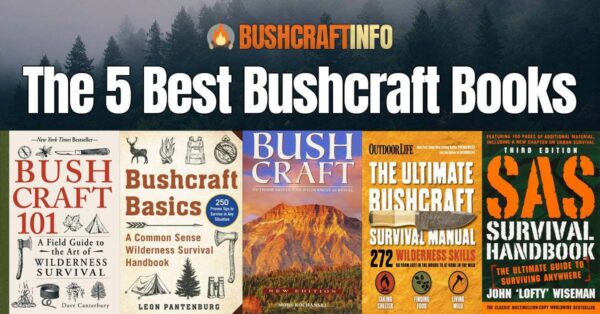 For more survival information, check out Leon’s book “Bushcraft Basics.”
For more survival information, check out Leon’s book “Bushcraft Basics.”
Please click here to check out and subscribe to the SurvivalCommonSense.com YouTube channel – thanks!

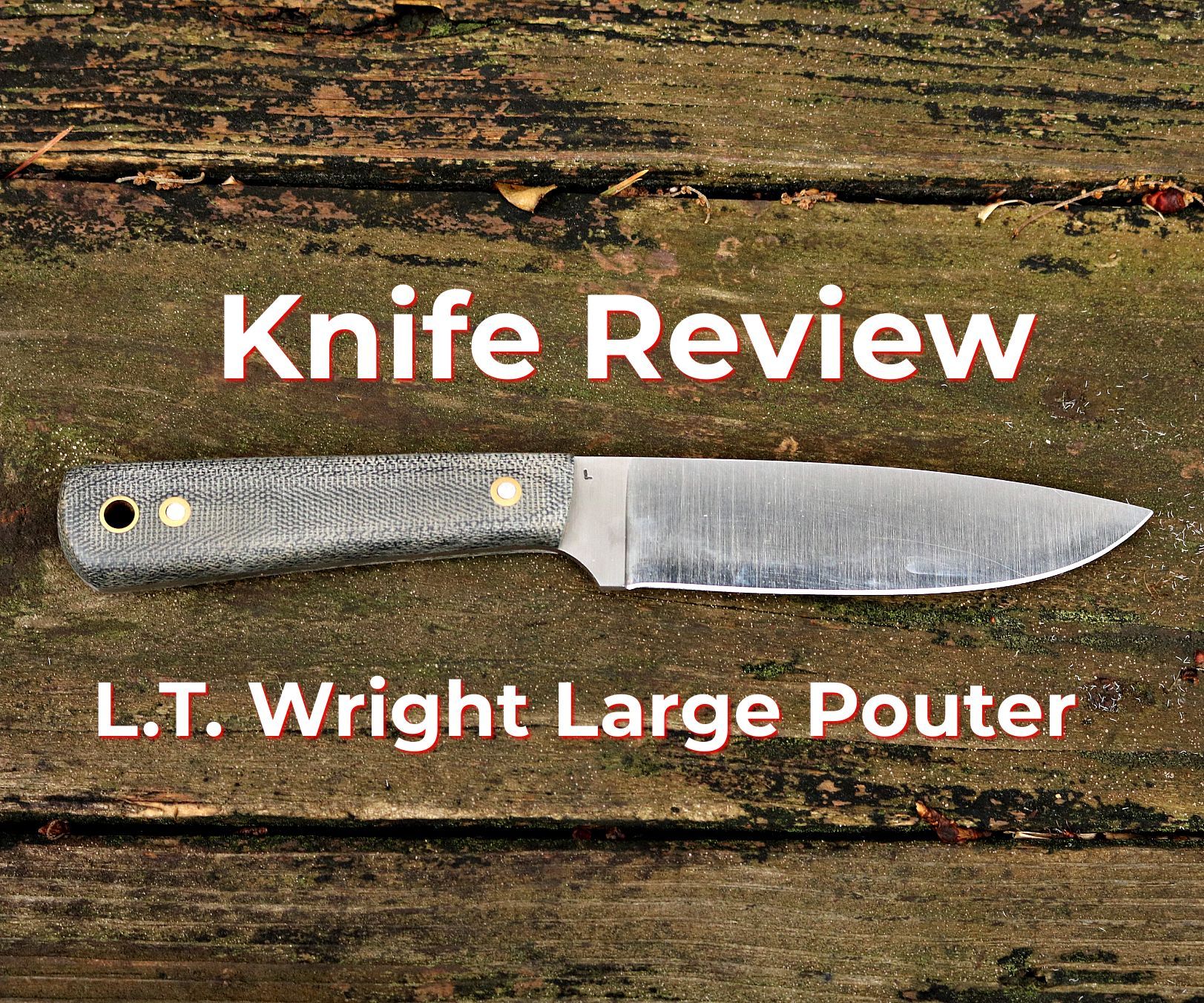
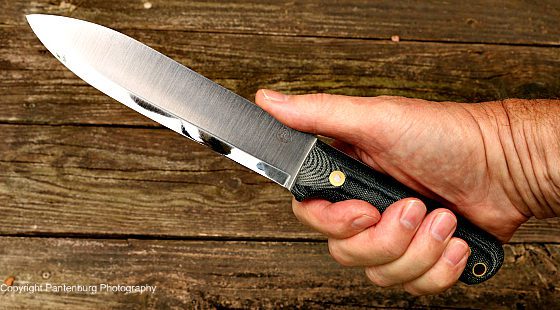
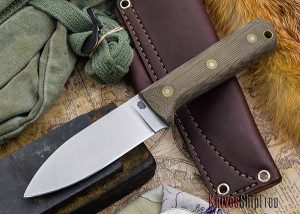

Leave a Reply